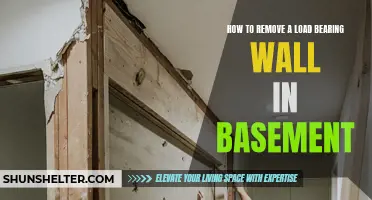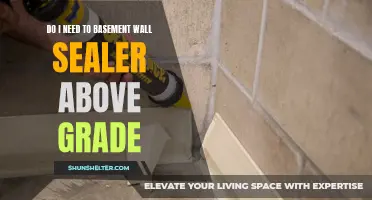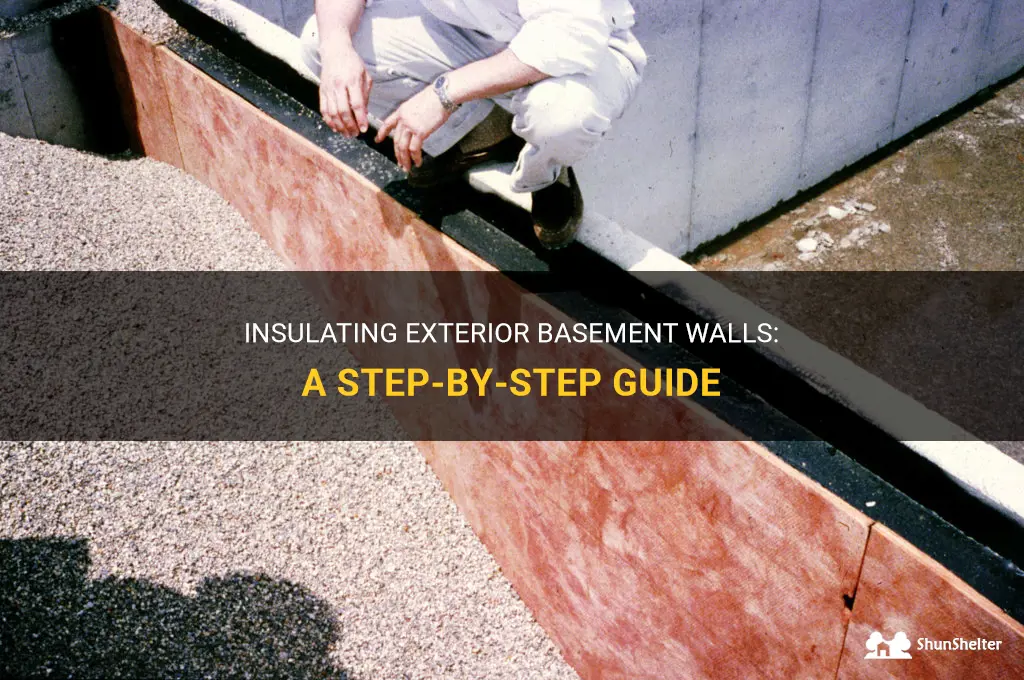
Insulating an exterior basement wall can be a challenging task, but it is a crucial one to ensure energy efficiency and prevent moisture issues. While there are various methods of insulating basement walls, one effective approach is to insulate from the outside. By insulating the exterior of the basement wall, you can create a continuous thermal barrier and protect against potential water damage from the surrounding soil. In this guide, we will explore the steps involved in insulating an exterior basement wall outside, providing you with the knowledge and confidence to tackle this important home improvement project.
| Characteristics | Values |
|---|---|
| Insulation material | Foam board insulation |
| Insulation thickness | 2-4 inches |
| R-value | R-10 to R-15 |
| Water resistance | Moisture-resistant |
| Vapor barrier | Installed on the interior side |
| Drainage system | Installed at the base of wall |
| Exterior finish | Waterproofing membrane or siding |
| Above-grade insulation extension | Insulate up to 2 feet above grade |
| Installation method | Adhesive or mechanical fasteners |
| Energy efficiency improvement | Reduces heat loss by 10-20% |
| Cost | Average cost per sq. ft. $10-15 |
| Durability | Long-lasting |
| Maintenance | Low maintenance |
What You'll Learn
- What are the benefits of insulating an exterior basement wall from the outside?
- What materials are commonly used to insulate exterior basement walls from the outside?
- Are there any specific steps or techniques to follow when insulating an exterior basement wall from the outside?
- How do you ensure that the insulation is properly sealed and weatherproofed when insulating an exterior basement wall from the outside?
- Are there any potential challenges or obstacles to consider when insulating an exterior basement wall from the outside?

What are the benefits of insulating an exterior basement wall from the outside?
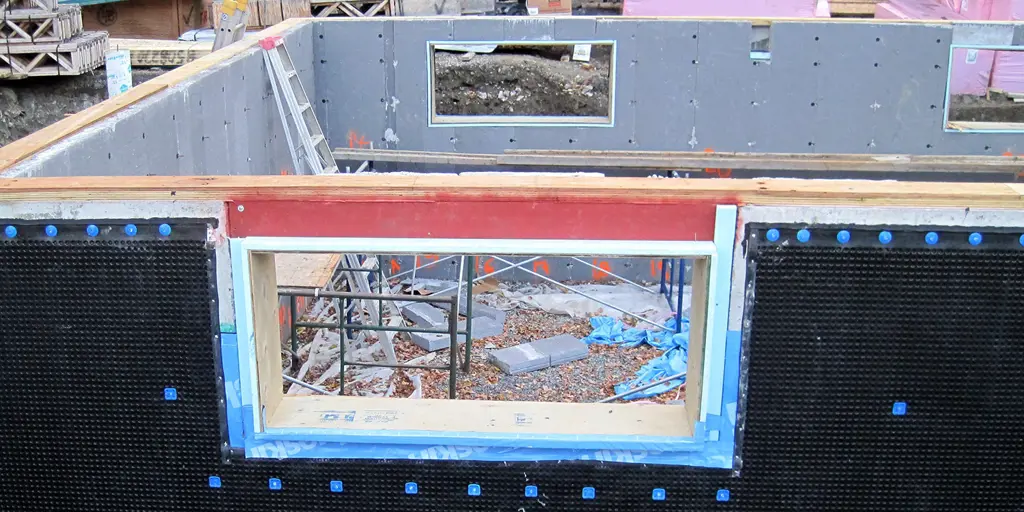
Insulating an exterior basement wall from the outside can offer several benefits. In this article, we will discuss these benefits and why it is a good idea to insulate your basement walls from the outside.
- Improved Energy Efficiency: One of the most significant advantages of exterior insulation is improved energy efficiency. Insulating the exterior wall creates a thermal barrier, preventing heat loss and reducing the need for heating in the winter and cooling in the summer. This can lead to substantial savings on energy bills.
- Moisture Control: Insulating the exterior basement wall can also help control moisture infiltration. The insulation acts as a moisture barrier, preventing water and moisture from entering the wall assembly. This can reduce the risk of mold growth, rot, and other moisture-related problems, which can be detrimental to the structural integrity of the building.
- Increased Comfort: Insulating the exterior wall can also improve the comfort level inside the basement. By reducing heat transfer through the walls, the basement will feel warmer in the winter and cooler in the summer. This can make the space more comfortable and usable throughout the year.
- Noise Reduction: Another benefit of exterior insulation is improved sound insulation. The insulation material absorbs and dampens sound waves, reducing noise transmission from the outside to the inside of the basement. This can be especially beneficial if the basement is used as a living or recreational space.
- Protection of the Foundation: Insulating the exterior basement wall can provide an extra layer of protection to the foundation. The insulation helps to reduce the fluctuation of temperature and moisture, which can damage the foundation over time. By maintaining a consistent temperature and moisture level, the durability of the foundation can be improved.
Now that we know the benefits of insulating an exterior basement wall from the outside, let's take a look at the step-by-step process of how it can be done.
Step 1: Prepare the Wall Surface - Before applying insulation, the wall surface should be clean and free of any debris. This can be done by scrubbing the wall with a stiff brush and using a power washer if necessary.
Step 2: Install Insulation Boards - Rigid insulation boards are commonly used for exterior basement wall insulation. These boards should be carefully measured and cut to fit the dimensions of the wall. They are then attached to the wall using adhesive or mechanical fasteners, such as screws or nails.
Step 3: Seal Joints and Gaps - To ensure a tight seal and prevent air leakage, all joints and gaps between the insulation boards should be sealed with foam or caulk. This will help to maintain the integrity of the insulation and prevent moisture infiltration.
Step 4: Install a Vapor Barrier - A vapor barrier should be installed over the insulation boards to further prevent moisture from entering the wall assembly. This barrier can be in the form of a plastic sheet or a specially designed vapor barrier membrane.
Step 5: Finish the Wall - Finally, the insulated wall can be finished with a protective layer, such as stucco, siding, or brick, depending on the desired aesthetic. This layer will provide additional protection to the insulation and enhance the overall appearance of the basement.
In conclusion, insulating an exterior basement wall from the outside offers several benefits, including improved energy efficiency, moisture control, increased comfort, noise reduction, and protection of the foundation. By following the step-by-step process outlined above, you can effectively insulate your basement walls and enjoy these advantages.
Fixing Cinder Block Basement Walls: A Comprehensive Guide
You may want to see also

What materials are commonly used to insulate exterior basement walls from the outside?
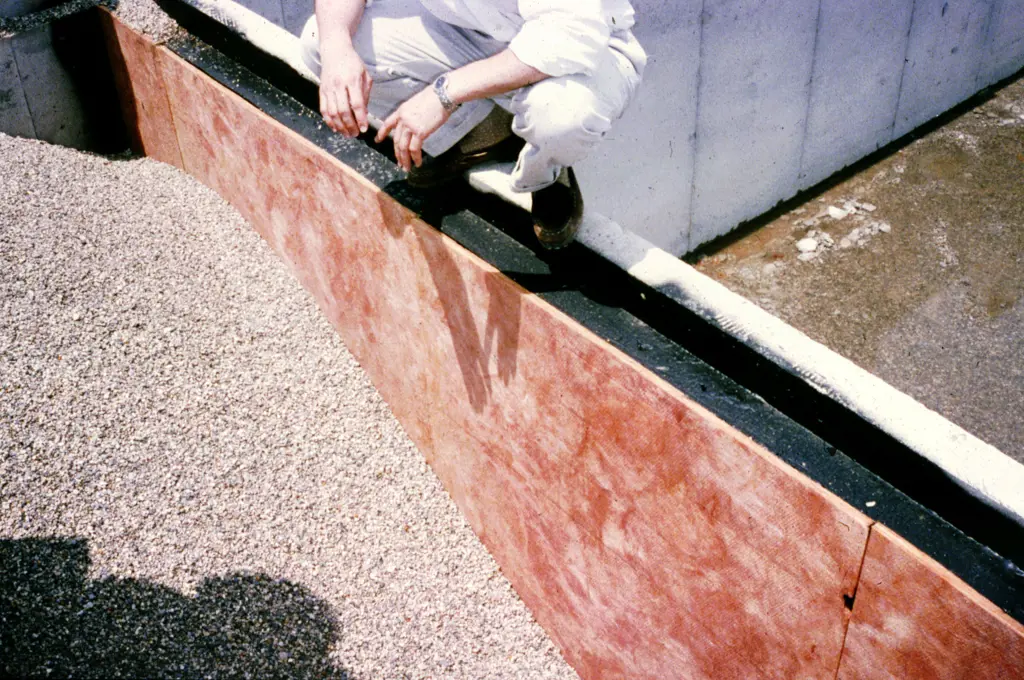
Exterior basement walls are a common area of heat loss in homes. Insulating them from the outside can greatly improve energy efficiency and overall comfort. Several materials are commonly used for this purpose, each with its own advantages and considerations.
One material commonly used for exterior basement wall insulation is rigid foam insulation. This type of insulation comes in sheets or panels that can be easily cut and installed. It provides excellent insulation value and helps prevent cold air from entering the basement. Rigid foam insulation also acts as a water barrier, helping to keep moisture out. It is important to ensure that the foam is properly sealed and installed to prevent any gaps or air leaks.
Another popular material for insulating exterior basement walls is spray foam insulation. This type of insulation is typically applied using a special spray gun, allowing it to easily conform to the wall surface and fill gaps and cracks. Spray foam insulation provides superior thermal insulation and helps create an air-tight seal. However, it is important to note that professional installation is recommended for this type of insulation, as it can be tricky to apply properly.
Fiberglass insulation is another option for insulating exterior basement walls. This type of insulation is made of tiny glass fibers and is typically installed in batts or rolls. Fiberglass insulation is affordable and easy to install, but it is not as effective at blocking air leaks as rigid foam or spray foam insulation. It is important to properly insulate around electrical outlets, pipes, and other potential air leak sources when using fiberglass insulation.
Additional options for exterior basement wall insulation include mineral wool insulation and cellulose insulation. Mineral wool insulation is made from rock or slag fibers and provides good thermal insulation and fire resistance. Cellulose insulation is made from recycled paper and treated with chemicals to make it fire-retardant. Both of these materials have their own advantages and considerations, so it is important to research and consult with professionals to determine the best option for your specific needs.
When insulating exterior basement walls from the outside, it is important to follow proper installation techniques and guidelines. This includes properly sealing any gaps or cracks, insulating around windows and doors, and ensuring that the insulation is properly secured to the wall surface. It is also important to consider factors such as local climate, moisture levels, and building codes when choosing insulation materials.
In conclusion, there are several materials commonly used to insulate exterior basement walls from the outside. Rigid foam insulation, spray foam insulation, fiberglass insulation, mineral wool insulation, and cellulose insulation are all options to consider. Each material has its own advantages and considerations, so it is important to carefully research and consult with professionals to determine the best option for your specific needs. Proper installation techniques and guidelines should be followed to ensure the effectiveness and longevity of the insulation.
Exploring the Versatility of French Doors as Basement Entrances
You may want to see also

Are there any specific steps or techniques to follow when insulating an exterior basement wall from the outside?
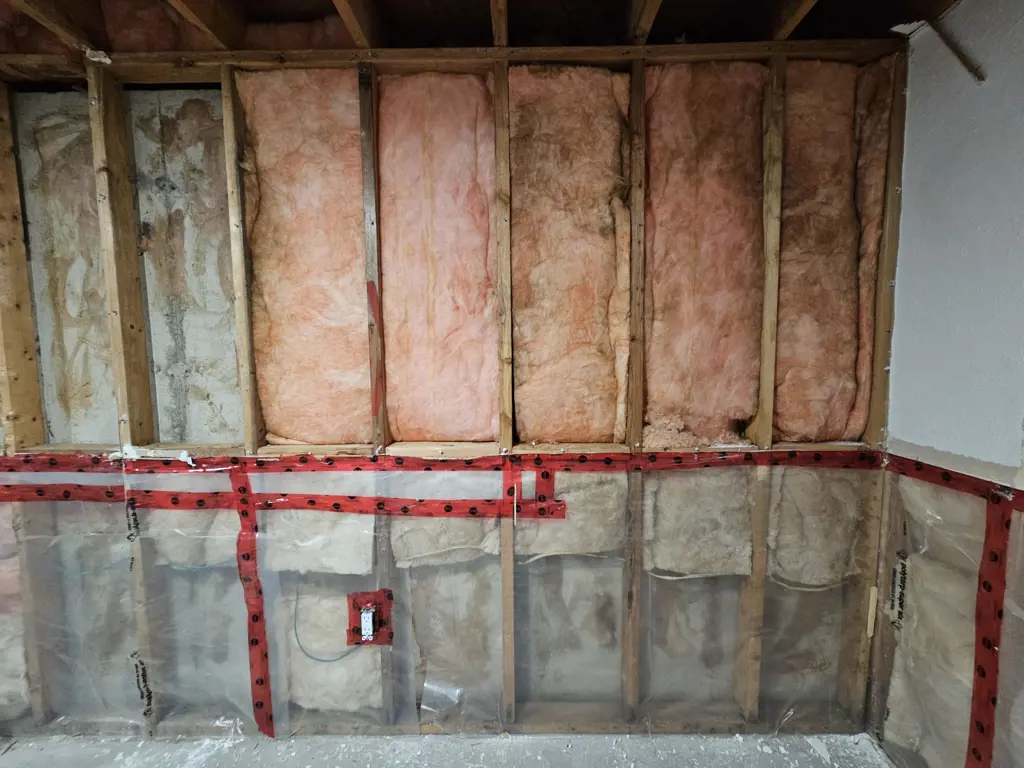
Insulating exterior basement walls from the outside is an essential step in ensuring a warm and energy-efficient home. This process involves creating a barrier between the basement walls and the outside elements, preventing heat loss and moisture infiltration. Proper insulation can also prevent the formation of condensation and reduce the risk of mold growth.
Here are some specific steps and techniques to follow when insulating an exterior basement wall from the outside:
- Prepare the area: Before starting the insulation process, make sure the exterior walls are clean and free from any obstructions. Remove any vegetation or debris that may be in contact with the walls.
- Waterproofing: It is crucial to ensure that the basement walls are properly waterproofed before installing insulation. This can be achieved by applying a waterproofing membrane or coating to the walls. This step prevents moisture from seeping through the walls and causing damage to the insulation.
- Insulation materials: Choose the right insulation materials for the job. When insulating exterior basement walls, it is recommended to use rigid foam insulation boards. These boards are available in various thicknesses and are designed to withstand the effects of moisture and temperature changes. They also provide high insulating value and can be easily cut to fit the desired dimensions.
- Install the insulation: Start by measuring the height and length of the basement walls to determine the amount of insulation needed. Cut the rigid foam insulation boards to size using a utility knife or a saw. Apply construction adhesive to the back of the insulation boards and firmly press them against the basement walls. Ensure that there are no gaps or spaces between the boards.
- Insulation joints: To create an airtight seal, cover the joints between insulation boards with a sealing tape or foam sealant. This step helps to prevent air leakage and improves the overall insulation performance.
- Protective barrier: Once the insulation is in place, it is essential to add a protective barrier over it to guard against damage and provide additional moisture protection. One common option is to install a layer of sheathing, such as plywood or cementitious backer board, over the insulation boards. This layer adds strength and protects the insulation from external forces.
- Finish the exterior: After the insulation and protective barrier are in place, you can proceed with finishing the exterior of the basement walls. This may involve applying a stucco, cladding, or other suitable finishing materials, depending on your preference and local building codes.
By following these steps and techniques, you can effectively insulate your exterior basement walls from the outside. It is important to note that proper insulation installation requires attention to detail and adherence to local building codes. Hiring a professional contractor or consulting with a building expert can ensure the insulation is done correctly and meets all necessary requirements.
Example:
Let's say you have a basement that always feels cold, and you're tired of high energy bills. You've decided to insulate the exterior walls to improve the energy efficiency of your home. Here's a step-by-step guide to help you get started:
- Clear the area: Remove any vegetation or debris around the exterior walls of your basement. This will ensure a clean and smooth surface for insulation installation.
- Waterproof the walls: Apply a waterproofing membrane or coating to the exterior walls to prevent moisture from seeping through. This step is crucial to protecting the insulation and preventing mold growth.
- Choose the insulation material: Select rigid foam insulation boards for their high insulating value and resistance to moisture. Measure the height and length of the walls to determine the amount of insulation needed.
- Cut and install the insulation: Using a utility knife or saw, cut the insulation boards to the desired dimensions. Apply construction adhesive to the back of the boards and firmly press them against the walls. Make sure there are no gaps or spaces between the boards.
- Seal the joints: Cover the joints between the insulation boards with a sealing tape or foam sealant. This will create an airtight seal and prevent air leakage.
- Add a protective barrier: Install a layer of sheathing, such as plywood or cementitious backer board, over the insulation boards to protect them from damage and provide additional moisture protection.
- Finish the exterior: Choose an appropriate finishing material, such as stucco or cladding, and apply it over the protective barrier. This will enhance the appearance of your home and further protect the insulation.
By following these steps, you can insulate your exterior basement walls effectively. Remember to consult local building codes and regulations to ensure compliance. If you're unsure about any aspect of the insulation process, it's always a good idea to seek professional advice or hire a contractor with experience in basement insulation.
How to Properly Mop Your Basement Floor
You may want to see also

How do you ensure that the insulation is properly sealed and weatherproofed when insulating an exterior basement wall from the outside?
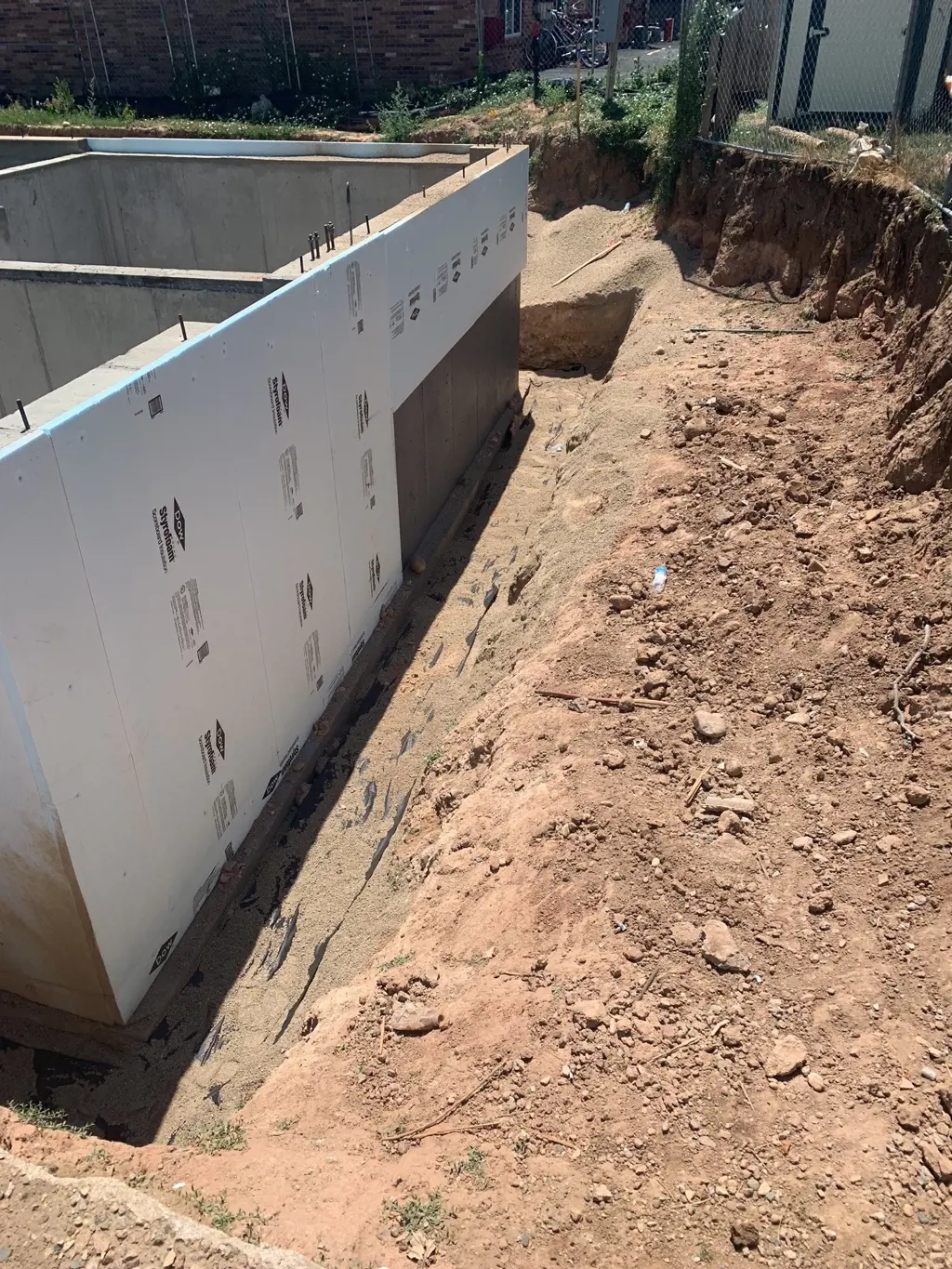
When insulating an exterior basement wall from the outside, it is important to ensure that the insulation is properly sealed and weatherproofed. This will help to prevent moisture infiltration, improve energy efficiency, and maintain a comfortable living space. Here are some steps to follow to ensure a proper seal and weatherproofing:
- Prepare the surface: Before applying insulation, ensure that the exterior basement wall is clean and free from any debris or loose materials. Use a wire brush or power washer to remove any dirt or grime from the surface.
- Repair any cracks or holes: Inspect the wall for any cracks or holes that could allow moisture to penetrate. Use an appropriate sealant, such as hydraulic cement or epoxy, to fill these gaps and create a watertight seal. Allow the sealant to dry completely before proceeding.
- Install a moisture barrier: Next, apply a moisture barrier to the exterior wall. This will help to prevent any water or moisture from entering the wall assembly. A popular choice for a moisture barrier is a self-adhering rubberized asphalt membrane, such as a peel-and-stick membrane. Install the membrane according to the manufacturer's instructions, making sure to overlap the seams and corners for maximum effectiveness.
- Install insulation panels: Once the moisture barrier is in place, it is time to install the insulation panels. There are several options for exterior basement wall insulation, including foam board insulation or insulated sheathing. These panels provide both insulation and structural support for the wall assembly. Cut the panels to fit the dimensions of the wall and secure them in place using adhesive or mechanical fasteners.
- Seal the edges and seams: To ensure a proper seal, it is crucial to seal the edges and seams of the insulation panels. This can be done using an appropriate sealant or tape that is compatible with the type of insulation being used. Pay close attention to areas where the panels meet, as well as any openings for windows or doors.
- Protect the insulation: Once the insulation is properly sealed, it is important to protect it from the elements. One common method of protection is to install a weather-resistant barrier over the insulation, such as a stucco or siding system. This barrier will provide an additional layer of insulation and protect against wind, rain, and UV damage.
- Ensure proper drainage: Finally, it is important to ensure that proper drainage is in place to prevent any water from accumulating around the exterior basement wall. This can be achieved by installing a grading system that slopes away from the foundation, or by incorporating a drainage system, such as a French drain or waterproofing membrane.
In conclusion, proper sealing and weatherproofing of an exterior basement wall insulation is essential to prevent moisture infiltration and improve energy efficiency. By following the steps outlined above, you can ensure that your insulation is properly sealed and protected, creating a comfortable and durable living space.
Exploring the Viability of Replacing Basement Jacks with a 2x4 Wall
You may want to see also

Are there any potential challenges or obstacles to consider when insulating an exterior basement wall from the outside?
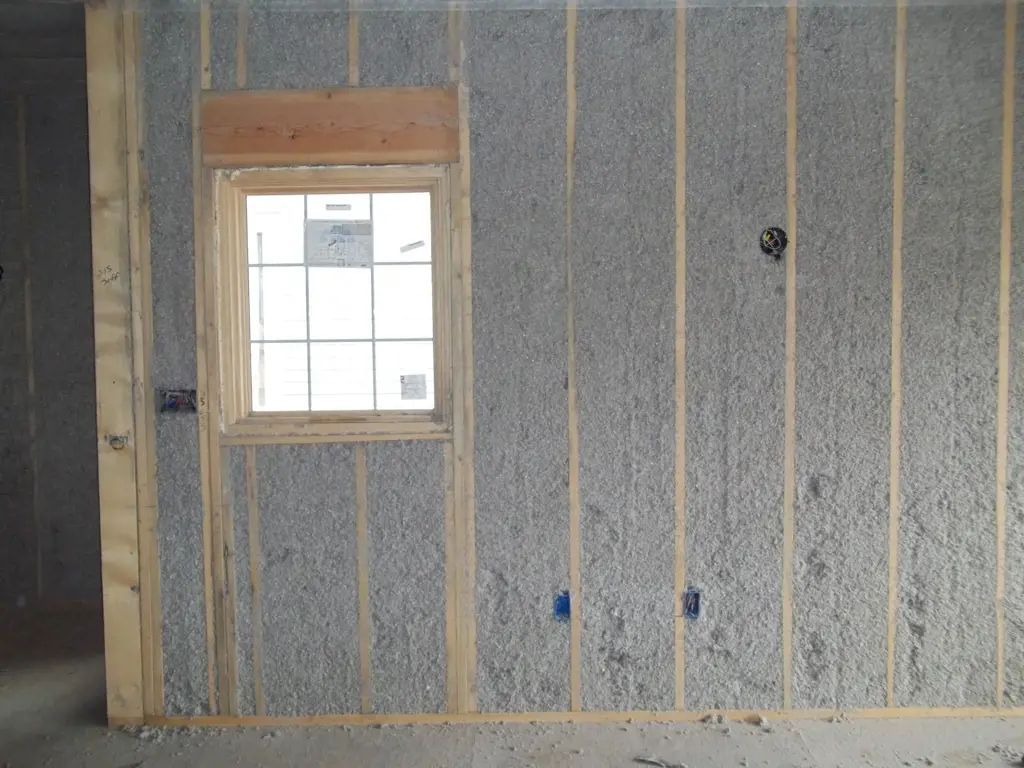
Insulating an exterior basement wall from the outside can provide several benefits, such as increased energy efficiency, improved comfort, and reduced moisture and mold issues. However, there are some potential challenges and obstacles that homeowners should consider before undertaking this project.
One potential challenge that homeowners may face is the excavation process. In order to insulate the exterior basement wall, the area around the foundation will need to be excavated, which can be a time-consuming and costly process. Additionally, if the home has extensive landscaping or other structures near the foundation, they may need to be removed or protected during the excavation process.
Another challenge that homeowners may encounter is the presence of water or moisture issues in the basement. If the basement has a history of water intrusion or high humidity levels, it may not be suitable for exterior insulation. In these cases, it may be necessary to address the water issues before proceeding with the insulation project.
When insulating an exterior basement wall, it is important to choose the right type of insulation material. There are several options available, including rigid foam insulation, spray foam insulation, and insulated concrete forms. Each type of insulation has its own pros and cons, so homeowners should carefully consider their specific needs and budget before making a decision.
Another consideration when insulating an exterior basement wall is the potential for thermal bridging. Thermal bridging occurs when heat bypasses the insulation through areas of higher conductivity, such as wood studs or metal fasteners. To mitigate thermal bridging, homeowners may need to add additional insulation or use materials with lower conductivity.
Before beginning the insulation project, it is also important to check local building codes and regulations. Some areas have specific requirements for exterior basement insulation, such as the use of certain materials or the inclusion of a vapor barrier. Failure to comply with these codes can result in fines or delays in the project.
In some cases, it may be more cost-effective or practical to insulate the basement walls from the inside rather than the outside. This approach can be less disruptive and may still provide many of the same benefits as exterior insulation. Homeowners should carefully evaluate their options and consult with a professional to determine the best approach for their specific situation.
In conclusion, while there are benefits to insulating an exterior basement wall from the outside, homeowners should be aware of the potential challenges and obstacles. These include the excavation process, water or moisture issues, selection of the right insulation material, thermal bridging concerns, compliance with building codes, and the possibility of insulating from the inside instead. By considering these factors and working with a professional, homeowners can make an informed decision and ensure a successful insulation project.
How to Detect Signs of Water Damage in Your Basement
You may want to see also
Frequently asked questions
Insulating the exterior basement wall can help prevent moisture infiltration, improve energy efficiency, and increase the comfort of the basement space. By insulating from the outside, you can eliminate potential thermal bridges and prevent cold air from entering the basement, reducing the need for heating and cooling.
The first step is to excavate the area around the basement wall to expose the foundation. Then, clean the wall thoroughly and repair any cracks or damage. Next, apply a waterproof membrane to the exposed foundation to create a moisture barrier. After that, install rigid foam insulation panels on the foundation wall and secure them with adhesive or mechanical fasteners. Finally, cover the insulation with a protective layer, such as a drainage board or stucco, to provide additional insulation and protect it from the elements.
While it is possible to install exterior basement wall insulation yourself, it is generally recommended to hire a professional for this type of project. Excavating the area around the basement wall can be labor-intensive and may require heavy machinery. Additionally, the installation of the insulation and protective layers requires careful attention to detail to ensure proper sealing and moisture protection. Hiring a professional can help ensure that the job is done correctly and to code.



